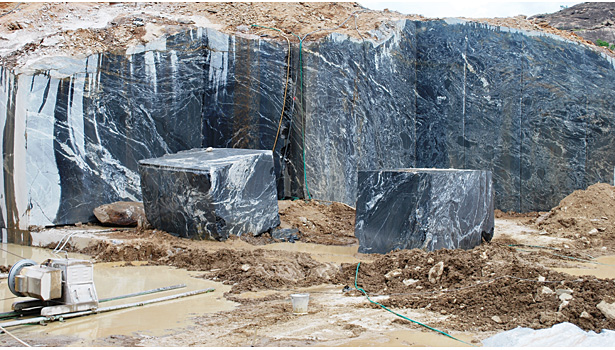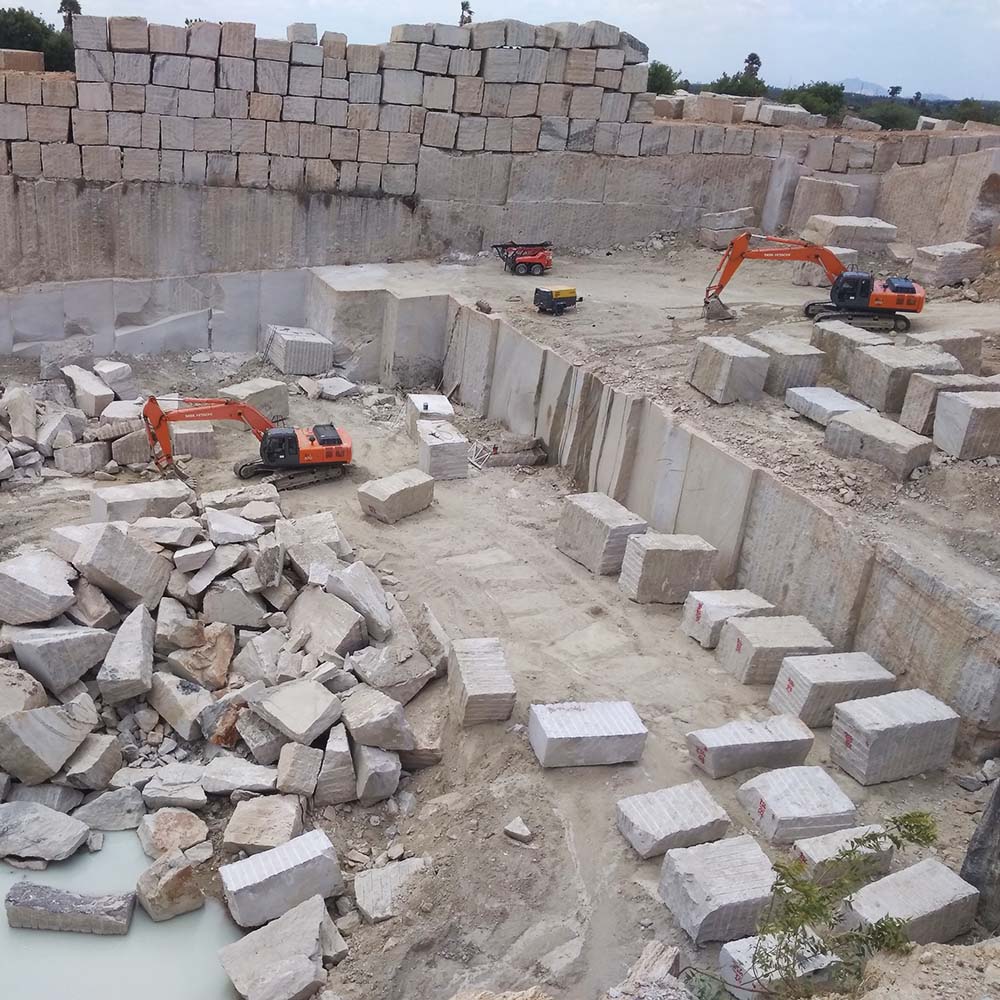Checking Out the Hidden Depths of Granite Quarrying: Introduction Nature's Masterpiece
The globe of granite quarrying is a realm where nature's old processes meet human resourcefulness in a symbiotic dancing that has formed landscapes and people for centuries. From the intricate geological developments that birth this marvelous stone to the careful techniques and tools utilized in its removal, the journey right into granite quarrying is a testament to the unified conjunction between male and nature. As we begin to untangle the layers of this market, we are consulted with a tapestry of environmental factors to consider, artistic ventures, and global ramifications that bid us to explore further the hidden depths of this all-natural masterpiece.

Geological Development of Granite
Granite, a type of igneous rock, creates deep within the Planet's crust with a complex procedure of air conditioning and solidification. The cooling process can take millions of years, allowing for the growth of huge mineral grains that provide granite its distinctive appearance and longevity.
Geologically, granite is identified as a felsic intrusive rock, meaning it is abundant in silica minerals and types from magma that intrudes right into existing rock developments. This intrusive development process contributes to granite's grainy structure and high compressive strength, making it a preferred option for construction and building purposes. As a result of its appeal, resilience, and resistance to warmth and scratches, granite has actually ended up being a sought-after product for counter tops, floor covering, and ornamental components in both property and commercial setups.
Quarrying Techniques and Devices
Using innovative machinery and accurate techniques, quarrying procedures remove granite from natural deposits with effectiveness and precision. Diamond cable saws are commonly used to cut with the granite, as they use precision reducing without triggering damages to the rock.
Big excavators and loaders are then used to eliminate the cut granite blocks from the quarry. These heavy-duty devices can manage the tremendous weight of the granite obstructs, making transport within the quarry website and filling onto vehicles for further processing efficient. Additionally, drilling equipment geared up with diamond-tipped drills is used to produce holes for splitting the granite into smaller, much more manageable pieces. This controlled splitting process ensures minimal waste and optimum utilization of the drawn out granite. In general, the combination of advanced machinery and experienced labor is important in the quarrying process to extract granite effectively while maintaining its top quality.
Environmental Impact and Sustainability
With the raising emphasis on environmental Homepage awareness in commercial practices, the granite quarrying sector is under examination for its effect on ecosystems and all-natural resources. Quarrying for granite can have significant ecological repercussions, consisting of habitat destruction, dirt erosion, and water air pollution. The extraction of granite often entails making use of nitroglycerins to break the rock, bring about noise and air contamination. The hefty machinery utilized in quarrying procedures consumes huge amounts of power, contributing to greenhouse gas discharges.
To minimize these environmental effects, lasting quarrying practices are being established. Business are applying steps such as reforestation programs, water recycling systems, and dirt reductions techniques to reduce their environmental impact. site here In addition, some quarries are now using sustainable power resources to power their operations, decreasing reliance on nonrenewable fuel sources.
Virtuosity in Granite Sculpting
The detailed process of transforming raw granite into spectacular artworks calls for exceptional skill and craftsmanship. granite quarries in south africa. Granite sculpting is a precise art type that demands persistence, creative thinking, and an intense understanding of the rock's residential or commercial properties. Carvers should possess a deep recognition for the natural charm of granite and the capability to imagine and draw out the covert creativity within it
Creativity in granite sculpting includes a series of precise steps. The artist starts by picking the best granite piece, thinking about elements such as color, veining, and texture. After that, making use of specialized devices like blades, grinders, and polishers, the artist meticulously sculpts, forms, and fine-tunes the stone to bring their vision to life. Each chisel mark, each contour, and each gloss is an intentional and calculated move in the direction of perfection.
The result of granite sculpting is an awesome masterpiece that showcases the find more info artist's talent and the integral appeal of the stone itself. Whether it's an impressive sculpture, an intricate fountain, or an in-depth relief sculpting, granite sculptures stand as testaments to human imagination and the enduring appeal of natural materials.
International Relevance of Granite Industry
Playing an essential duty in building and building projects worldwide, the granite market functions as a foundation in the international economic climate. With its convenience, sturdiness, and visual appeal, granite has come to be a preferred option for a vast range of applications, consisting of kitchen counters, flooring, monuments, and exteriors. The sector not only supplies job opportunity but likewise drives financial development through exports and regional intake.

Moreover, the granite sector plays an important role in lasting development campaigns by promoting liable quarrying methods and spending in environment-friendly technologies. As the need for natural rock continues to increase, the global relevance of the granite industry in shaping city landscapes and protecting social heritage can not be overstated.
Verdict
To conclude, the granite quarrying sector plays an essential duty in showcasing nature's masterpiece (granite quarries in south africa). From its geological formation to the virtuosity in sculpting, granite remains to hold worldwide value. Nevertheless, it is vital to consider the environmental influence and strive towards sustainability in quarrying techniques. By recognizing the quarrying techniques, equipment, and the creativity entailed, we can value the hidden depths of this natural source and its payment to numerous industries worldwide.
Comments on “Exploring Granite Quarries in South Africa: A Comprehensive Overview”